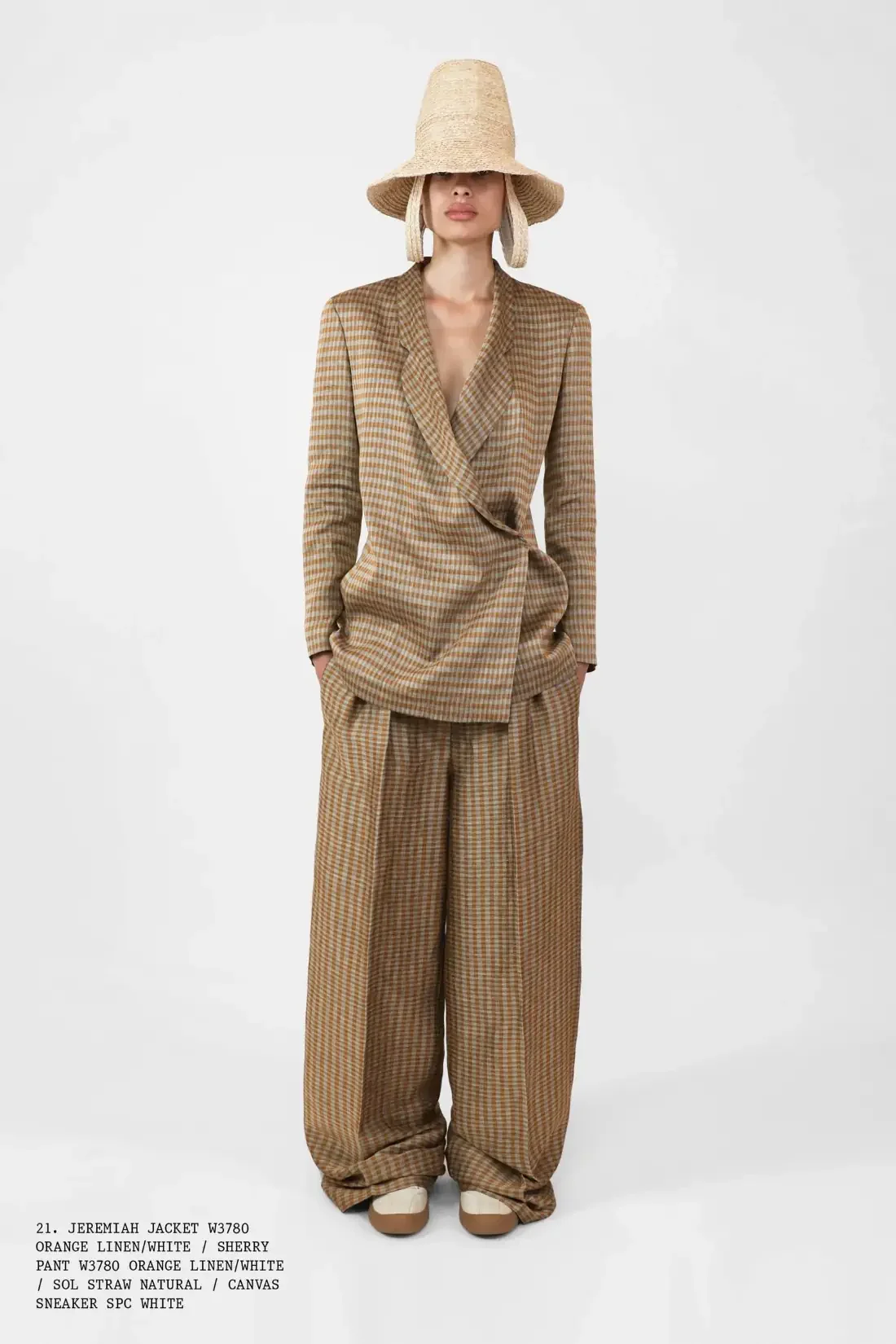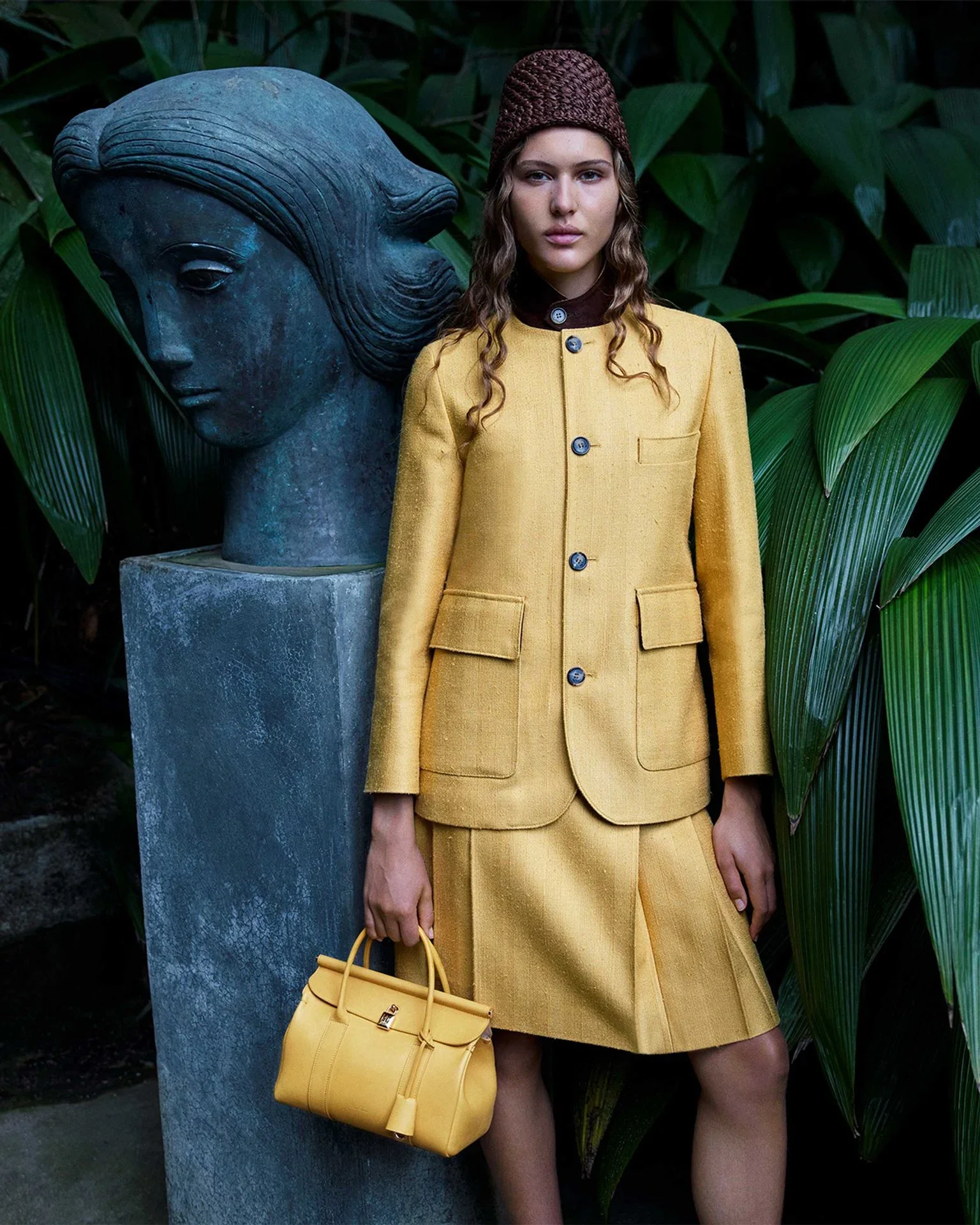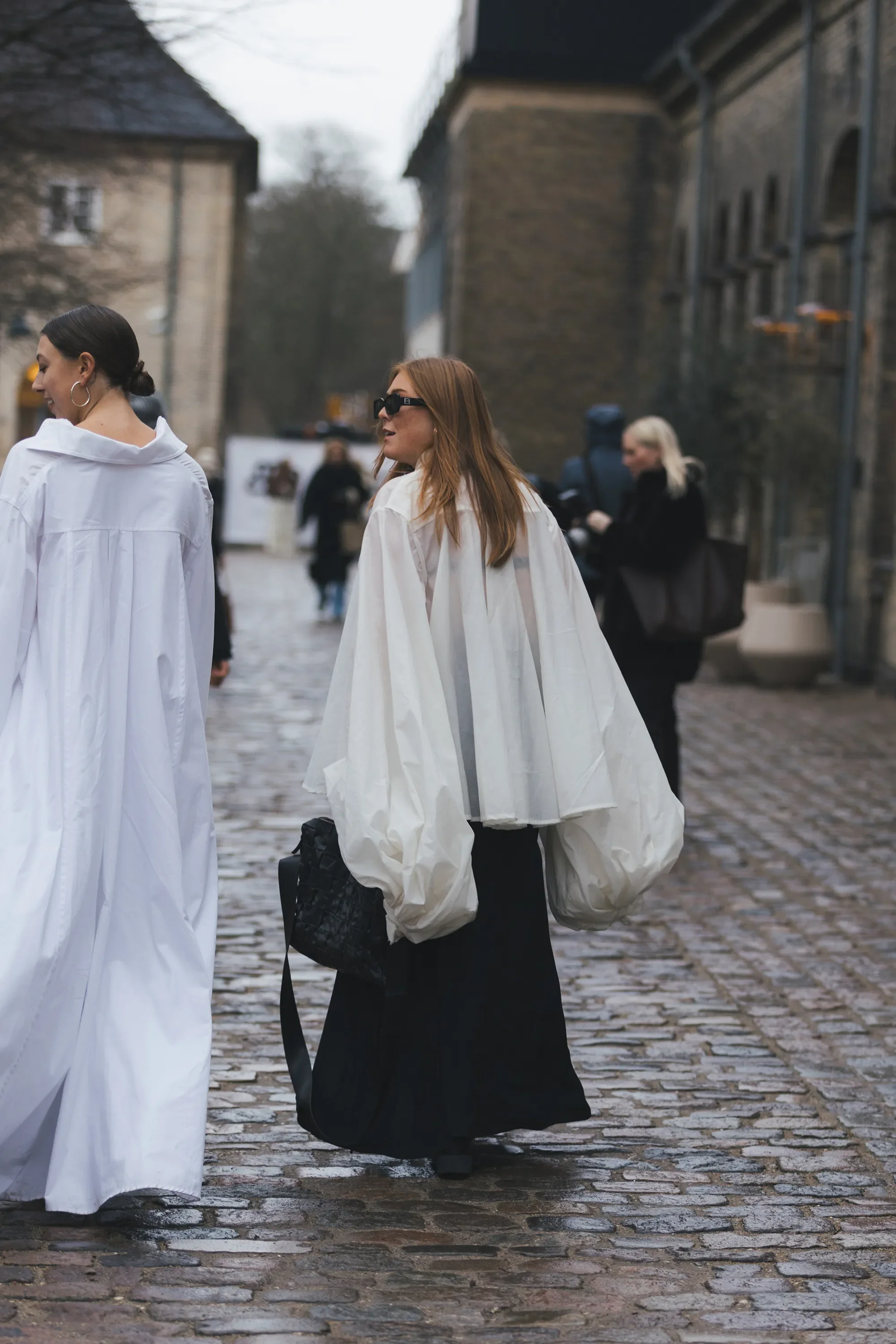The New Volume: Why Quiet Luxury Isn’t Going Anywhere
The Noise Before the Quiet
Gucci Autumn/Winter 2025 Collection, ELLE
Quiet luxury is hardly a new idea. But as we move deeper into the late 2020s, it’s shedding its “trend” status and emerging instead as a value system—one that prizes restraint, intentionality, and emotional durability over flash. This shift is, in part, a response to fatigue: fatigue with maximalism, oversized logos, endless collaborations, and the general noise of branding overload.
Take Gucci, for example. The house suffered a brutal start to 2025, with a staggering 25% decline in first-quarter sales (Reuters, 2025). Yes, macroeconomic factors played a role—rising interest rates, a shaky housing market in China (their biggest market) (SCMP, 2025), ongoing geopolitical unease. But let’s be honest: much of Gucci’s stumble can be traced to consumer burnout. After years of spectacle under Michele’s vision, audiences seemed ready to mute the chaos (Business Insider, 2022). They wanted quiet.
That’s where the new guard of luxury steps in. “Quiet luxury” may be the buzzword of the moment, but it’s also deeply misunderstood. Is it really just a performative, beige-coded elite flex? Or is it something else entirely—a recalibration of taste in a culture exhausted by noise?
What Is Quiet Luxury?
The Row Spring/Summer 2025 Collection, Fashion Photography
Before we can assess whether quiet luxury is a fad, a flex, or a meaningful shift in the fashion landscape, we need to start with a clear definition—because it’s widely misunderstood. Contrary to popular belief, quiet luxury isn’t just about beige tones, minimalist wardrobes, or the so-called “stealth wealth” of the ultra-rich hiding their net worth behind a pair of $2,000 trousers with no visible label. That’s the surface. The real essence of quiet luxury is about intentionality—an aesthetic that favours subtlety, craftsmanship, and emotional depth over overt branding or performative extravagance (People, 2023).
At its core, quiet luxury is the opposite of fast fashion’s volatility. It’s built on timeless silhouettes, extraordinary fabrics, expert tailoring, and a reverence for detail that doesn't need to announce itself. It whispers instead of shouts. It’s about knowing, not showing.
This aesthetic has intellectual roots, too. French sociologist Pierre Bourdieu famously introduced the idea of cultural capital—the notion that taste is often a stronger marker of class and power than wealth itself. In that framework, quiet luxury isn’t neutral; it’s coded. Subtlety is a language of power, and for better or worse, it’s fluency that still signals insider status.
Brands like The Row, Loro Piana, Jil Sander, and Bottega Veneta under Matthieu Blazy have become emblematic of this ethos. They build worlds that are sparse, sensual, and supremely crafted. Not coincidentally, these are brands that also top resale value rankings: for instance, The Row’s pieces have seen a 27% surge in five-year resale value amid the quiet luxury boom (FashionDive, 2025). As I wrote in my earlier piece on “Local Cool,” cities like Copenhagen have emerged as this movement’s spiritual home. From the clean-cut romance of Cecilie Bahnsen to the functional minimalism of Totême, Copenhagen design reflects a lifestyle where elegance is assumed—not sold (ELLE, 2024).
Quiet luxury isn’t anti-fashion. It’s anti-noise. And increasingly, it’s what fashion lovers across generations are craving.
Why It’s Not Elitist — It’s Earned
Loro Piana Spring/Summer 2025 Collection, Fashion Magazine
The most common critique of quiet luxury is that it’s inherently elitist—and on the surface, that seems hard to refute. These are, after all, clothes that cost thousands of dollars while refusing to declare their value in obvious terms. The aesthetic hinges on a kind of visual discretion that only those in the know can decode. To outsiders, it can feel like fashion’s version of a private club—where admission isn’t granted by logos, but by lineage, taste, and the ability to drop €5,000 on a Loro Piana coat without blinking.
And yes, price points are undeniably steep. The irony isn’t lost: a movement born from fatigue with spectacle still requires access to capital. But the truth is more complicated. Quiet luxury isn’t a declaration of class supremacy—it’s a cultural response. The resurgence of this aesthetic is powered not by the ultra-rich, but by a consumer base that is exhausted. Exhausted by the churn of microtrends, by logo fatigue, by performative spending, and by the algorithmic sameness of fast fashion. In many ways, quiet luxury is a rebellion—one that says: enough. A sea change in consumer attitudes has indeed prompted the return of quiet luxury, as shoppers lose appetite for “shouty” logos and marketing (Vogue Business, 2023). Even early adopters of fashion have started pushing back against the barrage of hyper-niche “aesthetics” and trends blasted at them by algorithms (Vogue Business, 2024).
According to industry reports, Gen Z is helping drive this shift. They’re willing to pay more for long-lasting, well-crafted pieces, and they’re choosing brands based on ethics, transparency, and emotional value — not just aesthetics (World Economic Forum, 2022). Across every age demographic, consumers (especially Gen Z) are making fewer but more expensive purchases; inherently sustainable-minded and wary of uncertain economic times, Gen Z has embraced a “fewer, better” mindset, investing in well-made items that stand the test of time (British Vogue, 2023). Surveys show that three-quarters of Gen Z would rather buy from sustainable, value-driven companies than chase big brand logos (World Economic Forum, 2022). This is a generation fluent in subtlety. They're suspicious of spectacle. For them, quiet luxury isn’t about exclusion; it’s about intention.
There’s also an aspirational humility to it. If maximalism screams “look at me,” quiet luxury asks: “Do I even need to be seen to matter?” That’s not elitist—it’s a rejection of fashion as a loud, relentless performance. It’s fashion as inner conviction.
The Spectacle Burnout: Why We’re Here Now
Balenciaga Resort 2025 Collection, Harper’s Bazaar
To understand the rise of quiet luxury, we have to reckon with the spectacle burnout that preceded it. Over the last decade, fashion became louder, faster, and more self-referential. Logos ballooned to billboard proportions. Entire brands were restructured around going viral. What mattered wasn’t personal style—it was whether your outfit could stop someone mid-scroll. In this economy of attention, subtlety had no place.
But every aesthetic has a saturation point, and by the early 2020s, the mood was shifting. The public grew weary of performative “fits,” coordinated drops, and the churn of fast fashion trends that felt more algorithmic than human (Vogue Business, 2024). Even the luxury houses couldn’t escape the fatigue. Alessandro Michele’s maximalist Gucci—once a visual revolution—began to feel bloated and crowded (Business of Fashion, 2024). His departure in 2022 marked the end of an era.
Balenciaga, meanwhile, faced a reckoning. After a years-long run as fashion’s provocateur-in-chief, the brand’s 2022 scandal ignited backlash that was deeper and broader than a single ad campaign. It offered a stark lesson in how fashion’s penchant for provocation can snowball into scandal, ensnaring everyone from influencers to executives in its wake (Vogue, 2022). The outrage was swift and notably widespread—Balenciaga’s mainstream visibility (from Simpsons cameos to Adidas collabs) meant the controversy drew criticism from far beyond the usual fashion circles (Vogue, 2022). It exposed how reliant fashion had become on shock value—and how fragile that approach truly is.
At Louis Vuitton, the post-Virgil Abloh moment became a searching silence. Abloh’s reign was one of radical visibility: streetwear, symbolism, youth culture splashed across every feed. But with his absence came a creative vacuum. LV—like much of the industry—seemed unsure how to evolve beyond virality.
This aesthetic burnout isn’t just visual—it’s emotional. As philosopher Byung-Chul Han argues in The Burnout Society (2010), capitalism’s shift from discipline to performance has left us mentally depleted. We’re not just overworked—we’re overstimulated. The noise is psychic. Quiet luxury responds to this cultural fatigue. It doesn’t try to win attention—it withdraws from the race entirely. In doing so, it offers something increasingly rare: peace.
The Quiet Power Players
Copenhagen Fashion Week Autumn/Winter 2025 Street Style, Vogue
Quiet luxury may reject noise, but it doesn’t exist in a vacuum. Around the world, certain brands, designers, and cities are emerging as standard-bearers of this new sartorial subtlety—not just because they avoid spectacle, but because they’ve built an identity around intention, longevity, and restraint.
Copenhagen is the clearest case study. As I argued in my “Local Cool” article, the Danish capital doesn’t just produce minimalist fashion—it lives it. Its cultural emphasis on functionality, simplicity, and sustainability makes it fertile ground for quiet luxury’s core values. Brands like Totême, Cecilie Bahnsen, and Skall Studio excel not only in aesthetic discipline but in ethical design practices. Their clothes feel personal, not performative – Totême, for instance, effortlessly encapsulates the essence of quiet luxury with its timeless cuts and impeccable tailoring (ELLE Australia, 2024).
The same is true for global powerhouses like The Row, Max Mara, Lemaire, and Bergfabel. These brands don’t chase trends; they refine them out of existence. Their appeal isn’t in novelty but in consistency. In a world driven by hype cycles and drops, their commitment to long-lasting style has become their edge. And consumers are responding—not just by buying, but by keeping. According to resale data, these understated brands retain value and demand far better than trendier, logo-heavy counterparts. Vestiaire Collective’s recent value guide, for example, found that The Row had the fastest-growing resale value on its platform (a 27% five-year CAGR), a jump the company directly attributed to the quiet luxury boom (FashionDive, 2025). In other words, quiet luxury has proven to be an investment strategy for shoppers: pieces that don’t scream actually hold their worth over time. The increased interest in vintage and quality materials underscores this; as Vestiaire noted, consumers are seeking out natural fibers like wool, silk, and cashmere, having grown disillusioned with disposable synthetics (FashionDive, 2025).
Designers are taking note. Matthieu Blazy’s Bottega Veneta has been a revelation: rich textures, hushed palettes, sublime tailoring—his approach elevates everyday items into objets d’art, resonating with connoisseurs of refined style (The Vou, 2024). Luke and Lucie Meier, for their part, brought a poetic restraint to Jil Sander. They redefined minimalism not as sterile or soulless, but as “deeply human” – celebrating construction without complication, emotion without theatrics, for those who appreciate subtlety, quality, and quiet confidence (Medium, 2025). And at Gucci, Sabato De Sarno made a bold (if short-lived) gamble: dialing down the volume at one of fashion’s loudest houses. His debut collections in 2023-24 stripped away the camp and cacophony in favor of wearability, sensuality, and what he called “Italianity” – essentially a return to the brand’s roots of craftsmanship and elegance. It was a clear play into the quiet luxury trend, testing whether Gucci’s clientele was ready to trade irony for elegance. (“On the surface, De Sarno’s Gucci feels a simplification, but in reality, it is the result of meticulous engineering...each piece a carefully constructed expression of craftsmanship,” one reviewer noted (Denizen, 2024)). It remains to be seen if Gucci’s experiment with restraint will pay off, but the very attempt speaks volumes about where luxury’s mindset is shifting.
But this moment isn’t just about clothes. It’s cultural. Minimalism is reasserting itself in architecture, film, interiors. Look at the monochrome gravitas of Succession or the tailored restraint of The Crown. The message is everywhere: quiet doesn’t mean absent—it means assured.
A Whisper Can Be Louder
Jil Sander Spring/Summer 2025 Collection, ELLE
Quiet luxury is not the end of fashion’s voice — it’s the rediscovery of its tone. It reminds us that identity doesn't have to be loud to be powerful. In fact, in a culture of endless scrolling and visual bombardment, silence can be a more radical act than spectacle. The quiet isn’t empty. It’s considered. It’s a return to depth over dazzle, to intention over impulse. It gives us space to feel, to choose, to define style without being defined by trends.
That doesn't mean spectacle is dead — far from it. Fashion is cyclical. The pendulum will swing again; maximalism will return, as it should. But the era of quiet luxury has shifted the collective palate. It taught us that even in the absence of noise, meaning can speak volumes. The brands that will thrive in this new landscape are the ones that understand modulation — who know how to whisper when others shout, and how to shout with purpose when the moment calls for it. It's not about stripping away drama entirely, but using it wisely.
Quiet luxury isn’t a trend to be copied. It’s a reset — a recalibration of how we engage with clothes, culture, and ourselves. As consumers become more thoughtful and more emotionally attuned, the industry will have to follow suit. In the end, what’s being sold isn’t just an aesthetic — it’s a feeling. And right now, the world is feeling ready for quiet.





